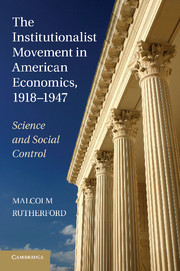References
Published online by Cambridge University Press: 03 May 2011
- Type
- Chapter
- Information
- The Institutionalist Movement in American Economics, 1918–1947Science and Social Control, pp. 357 - 392Publisher: Cambridge University PressPrint publication year: 2011



